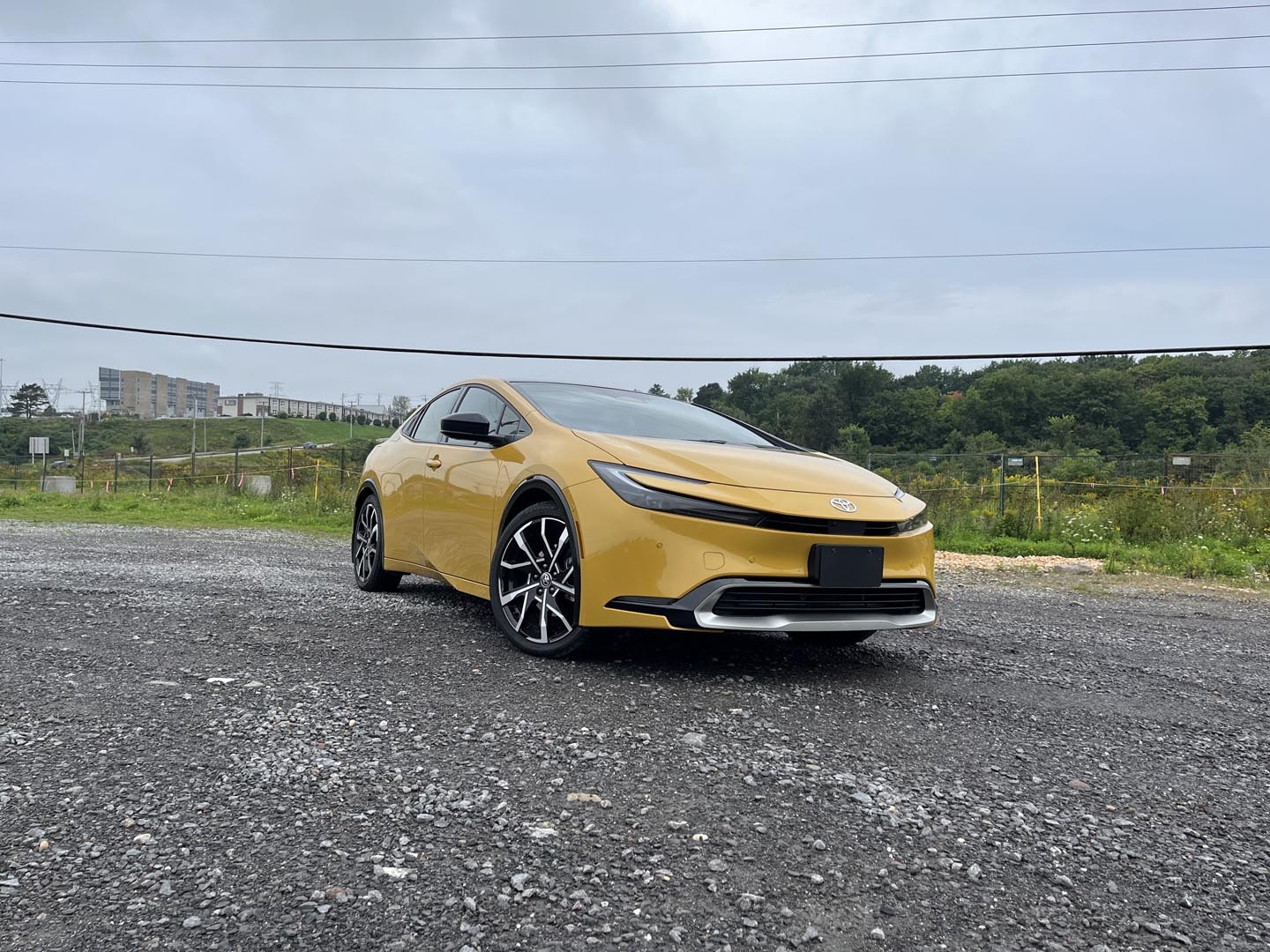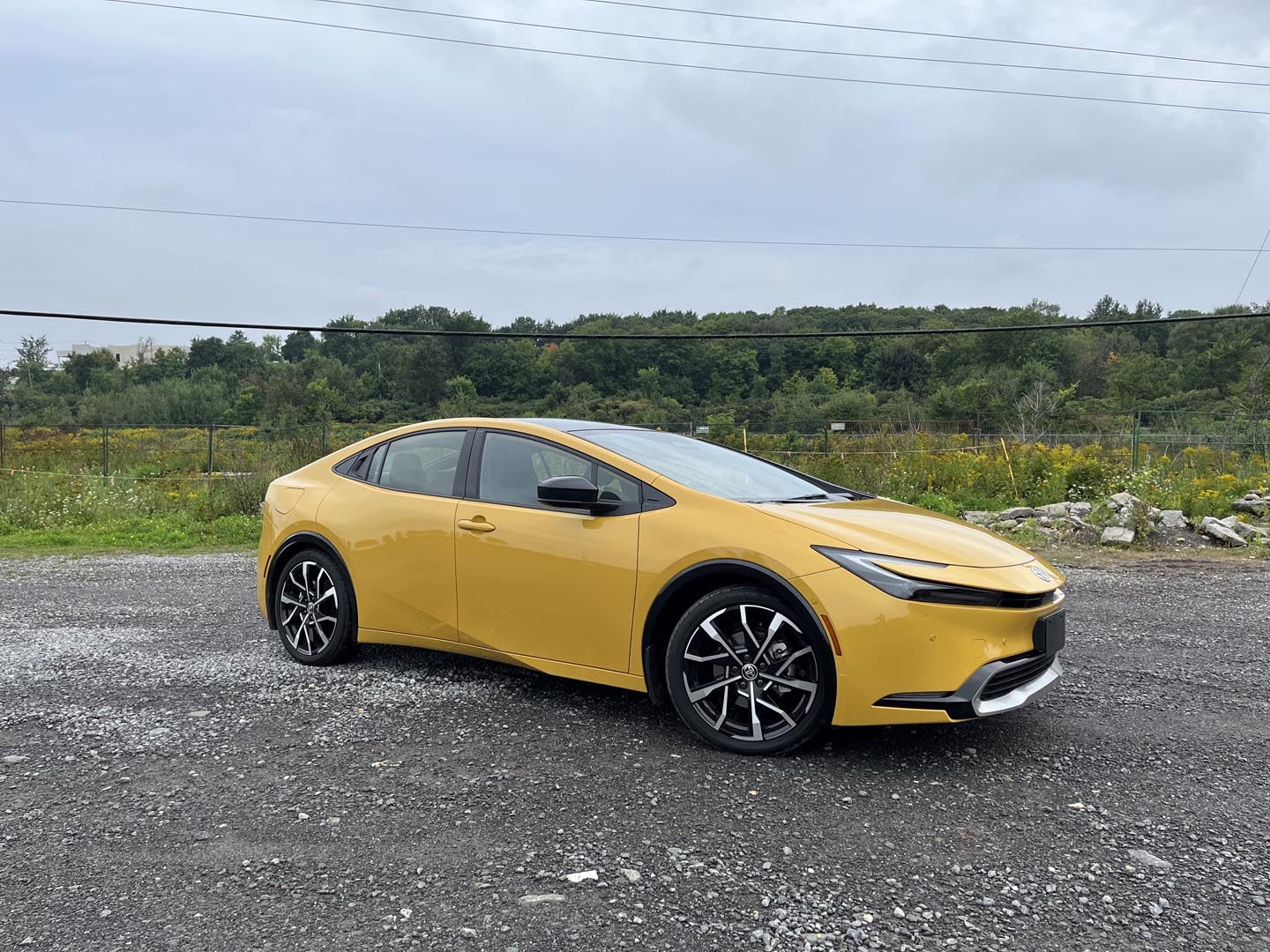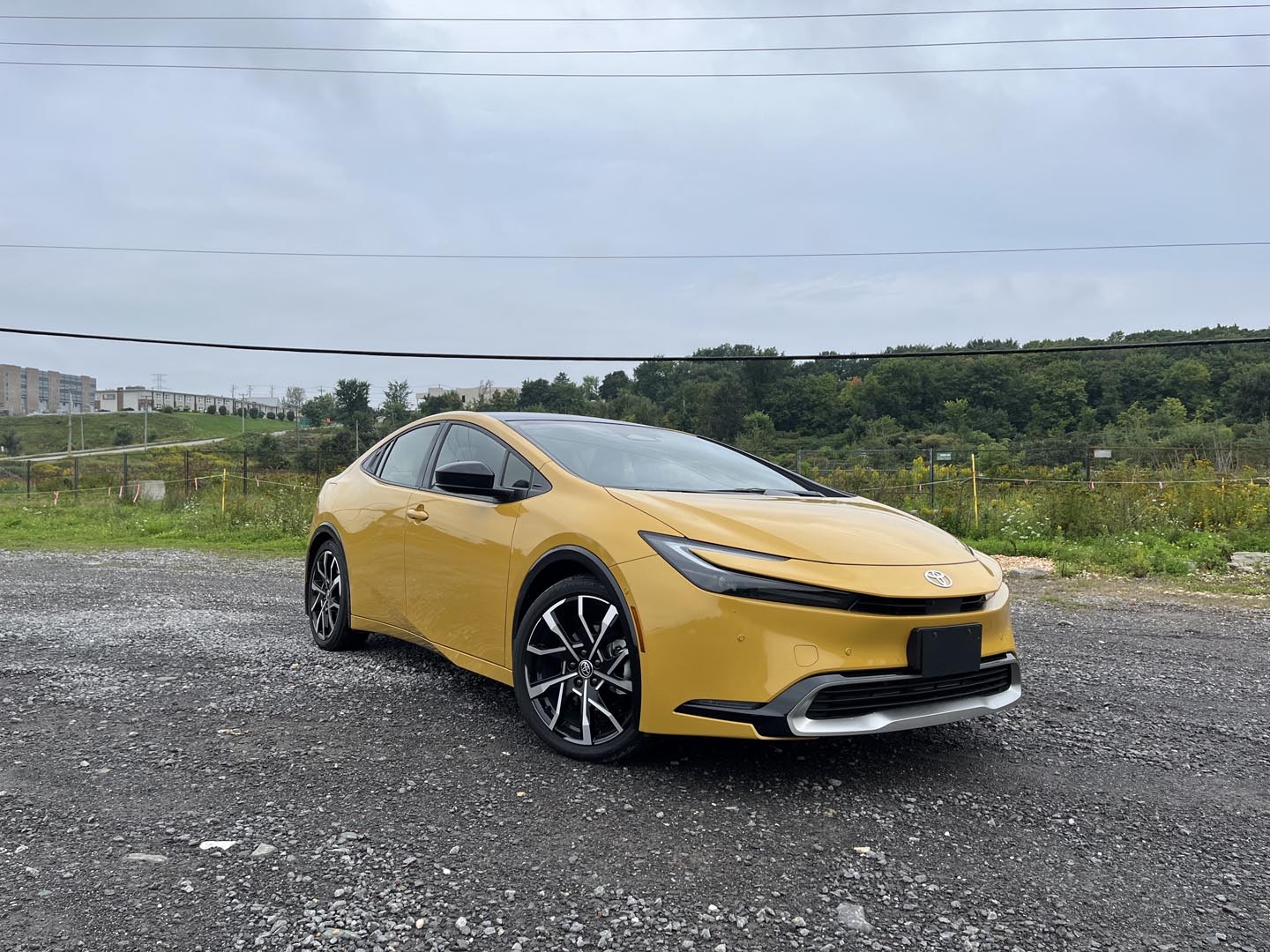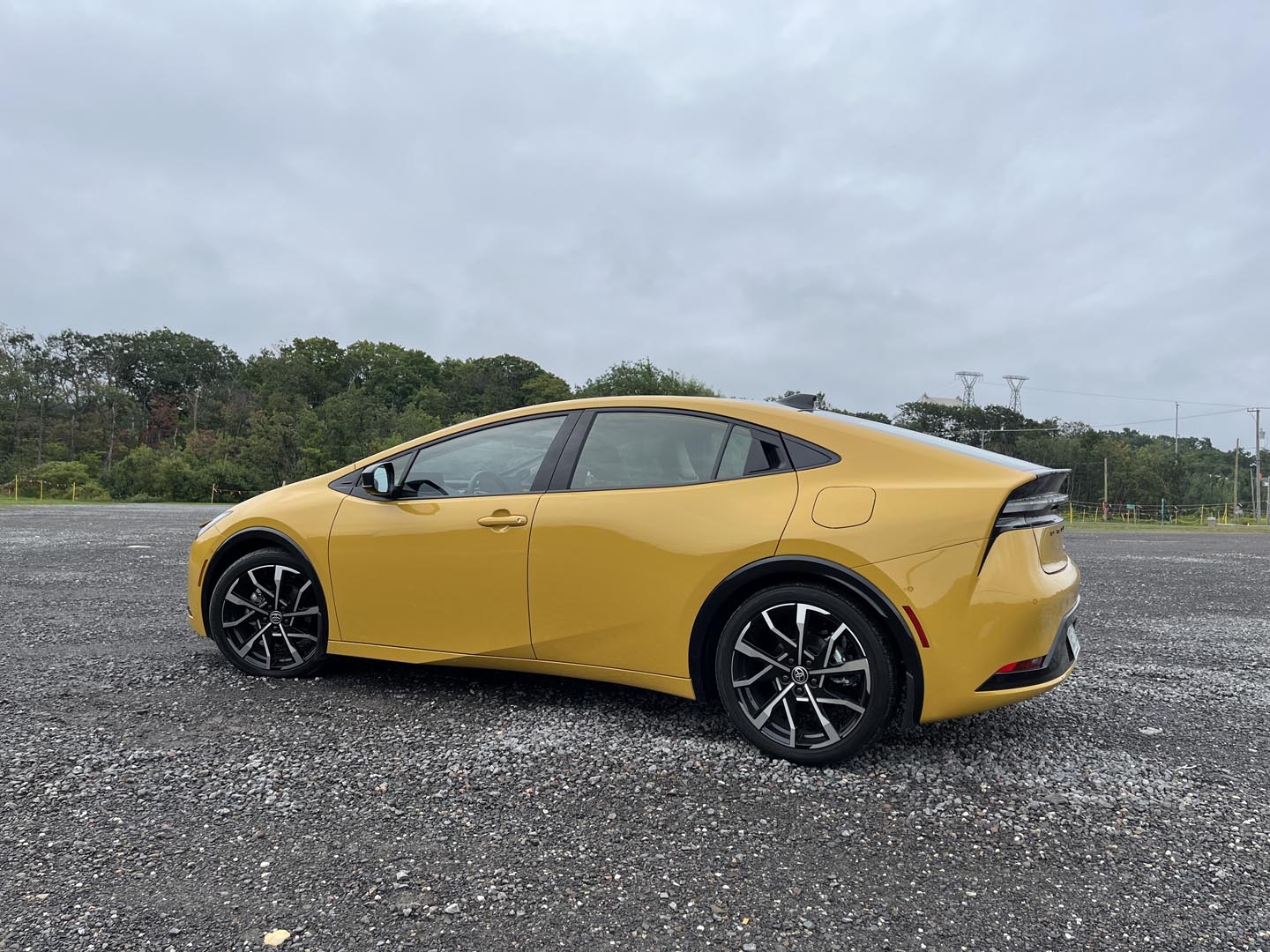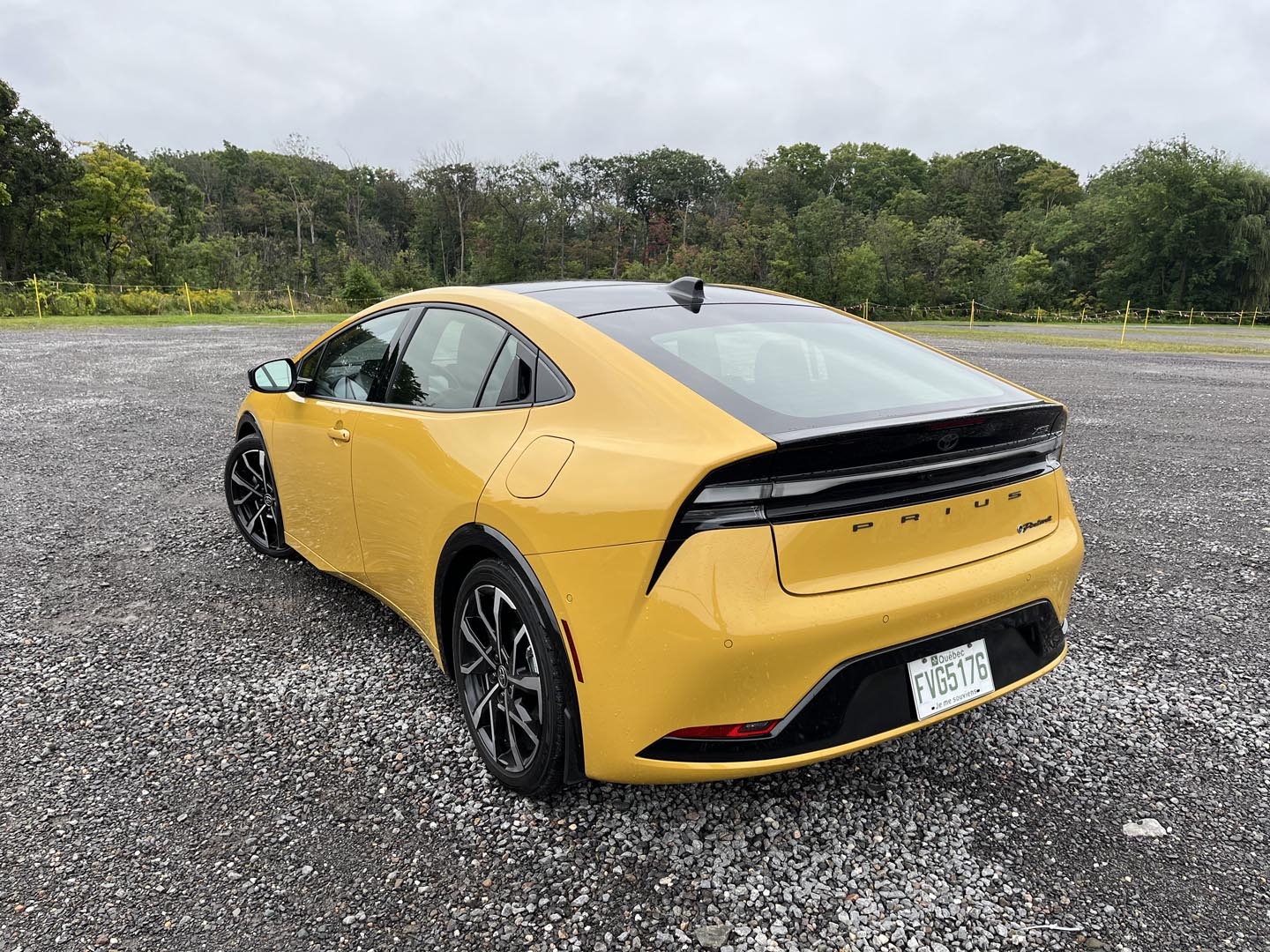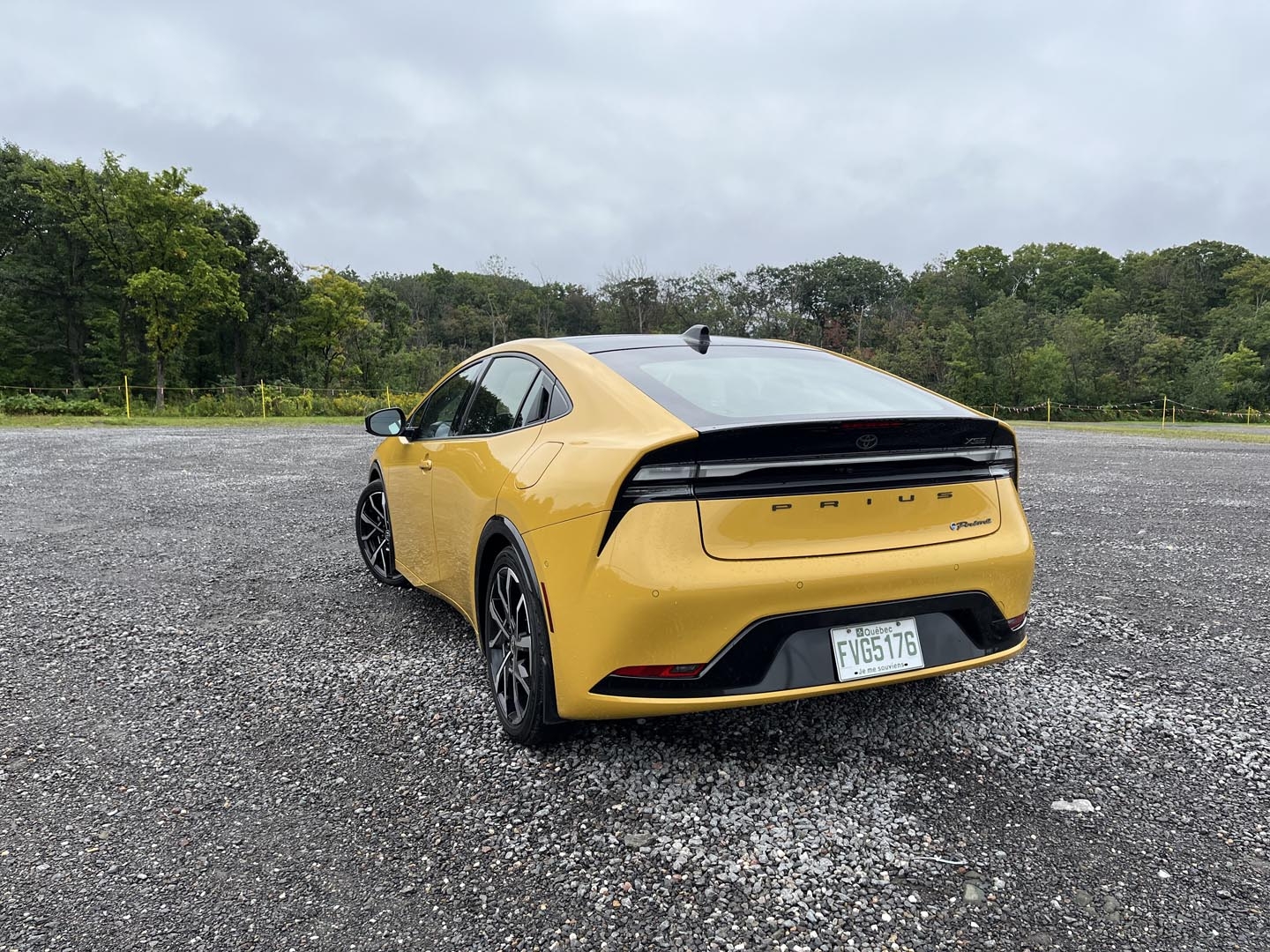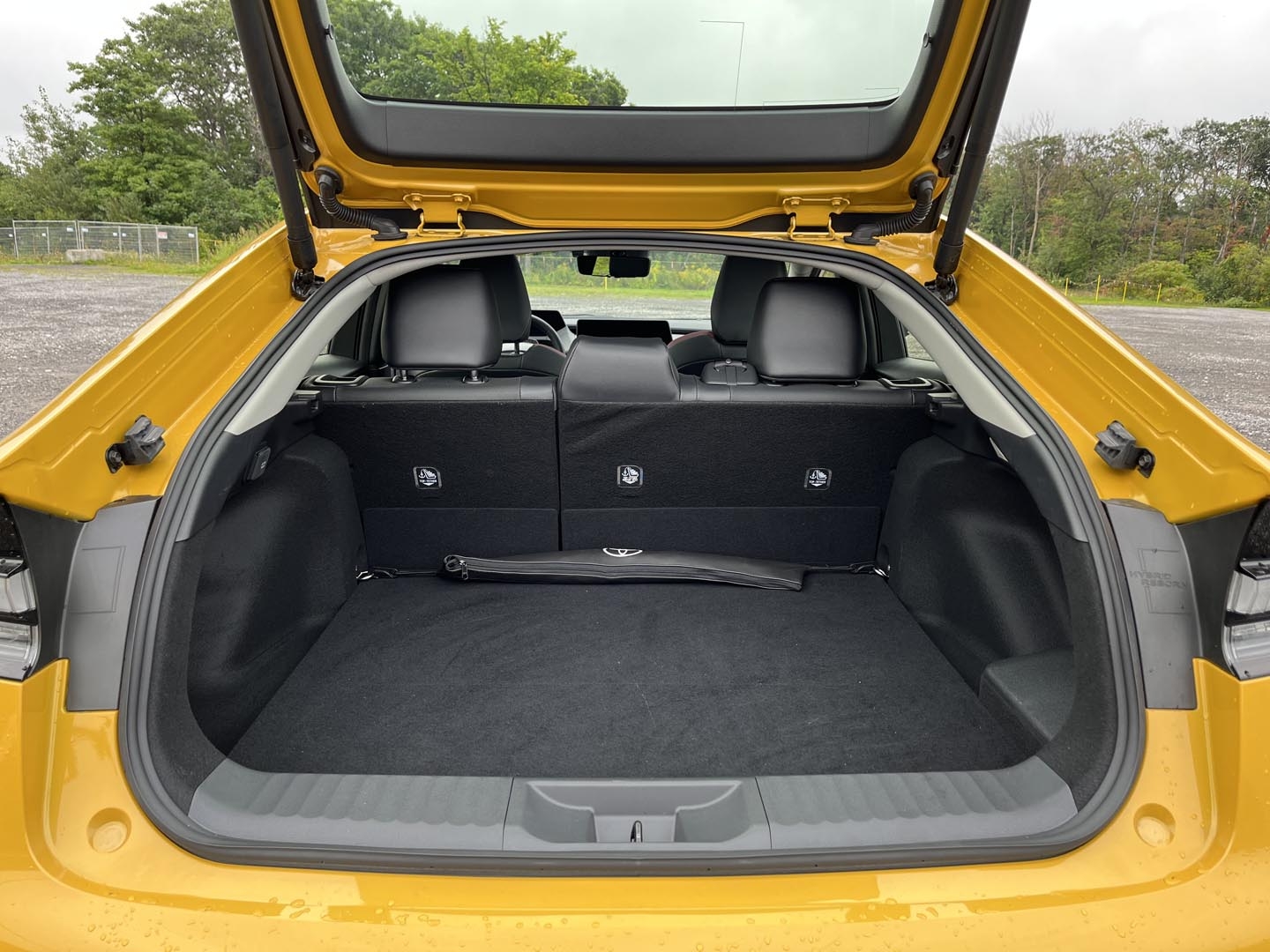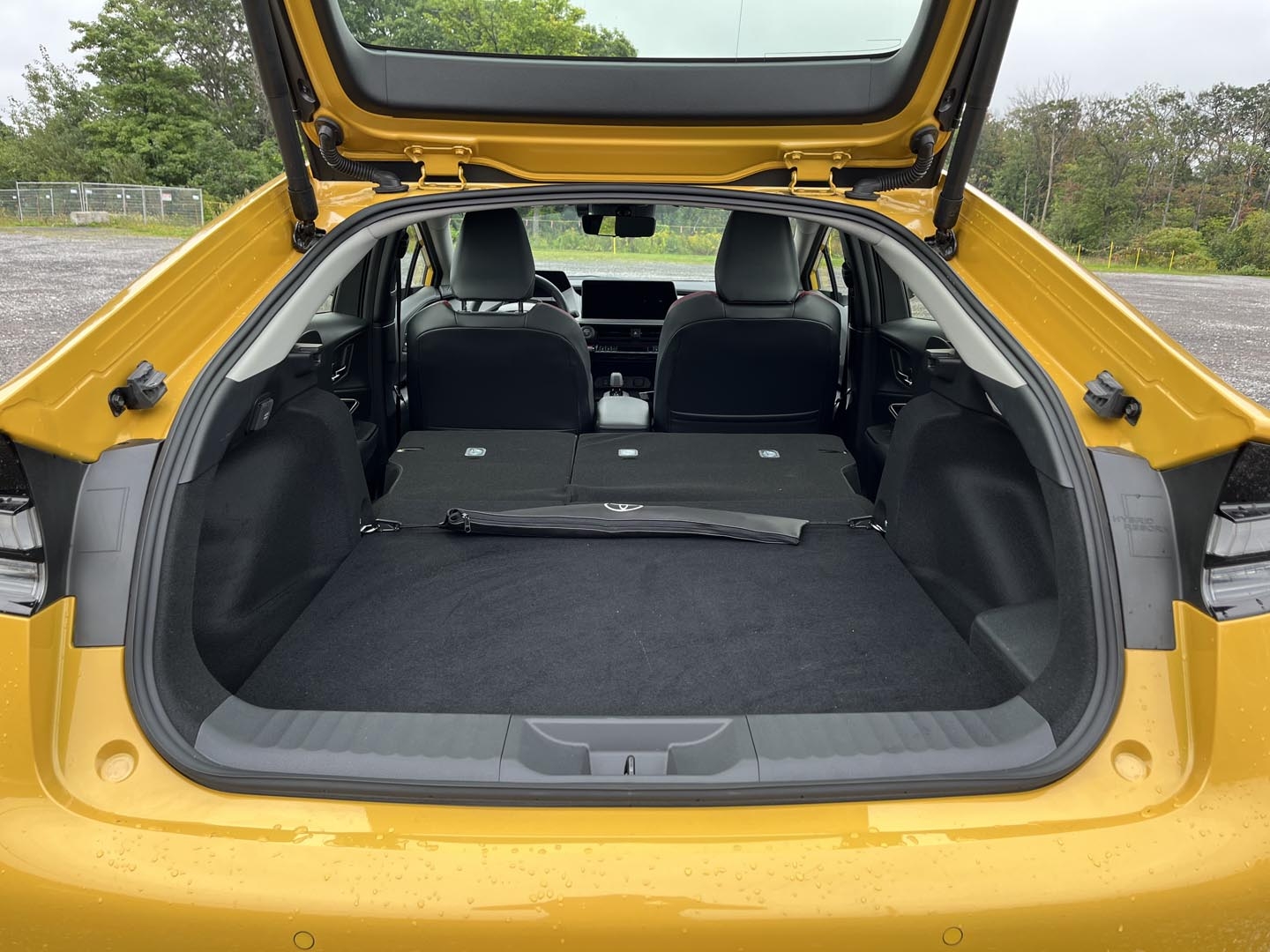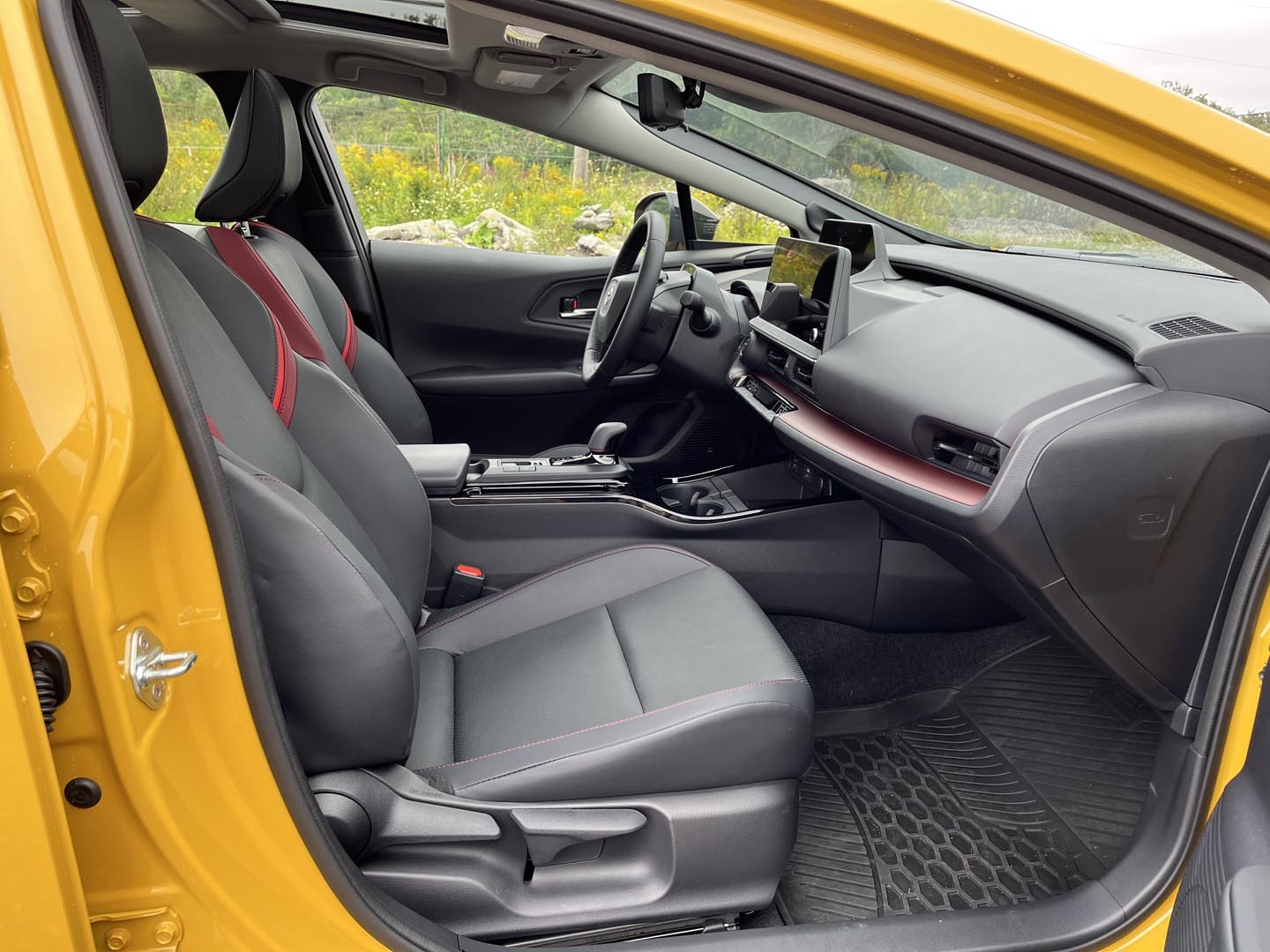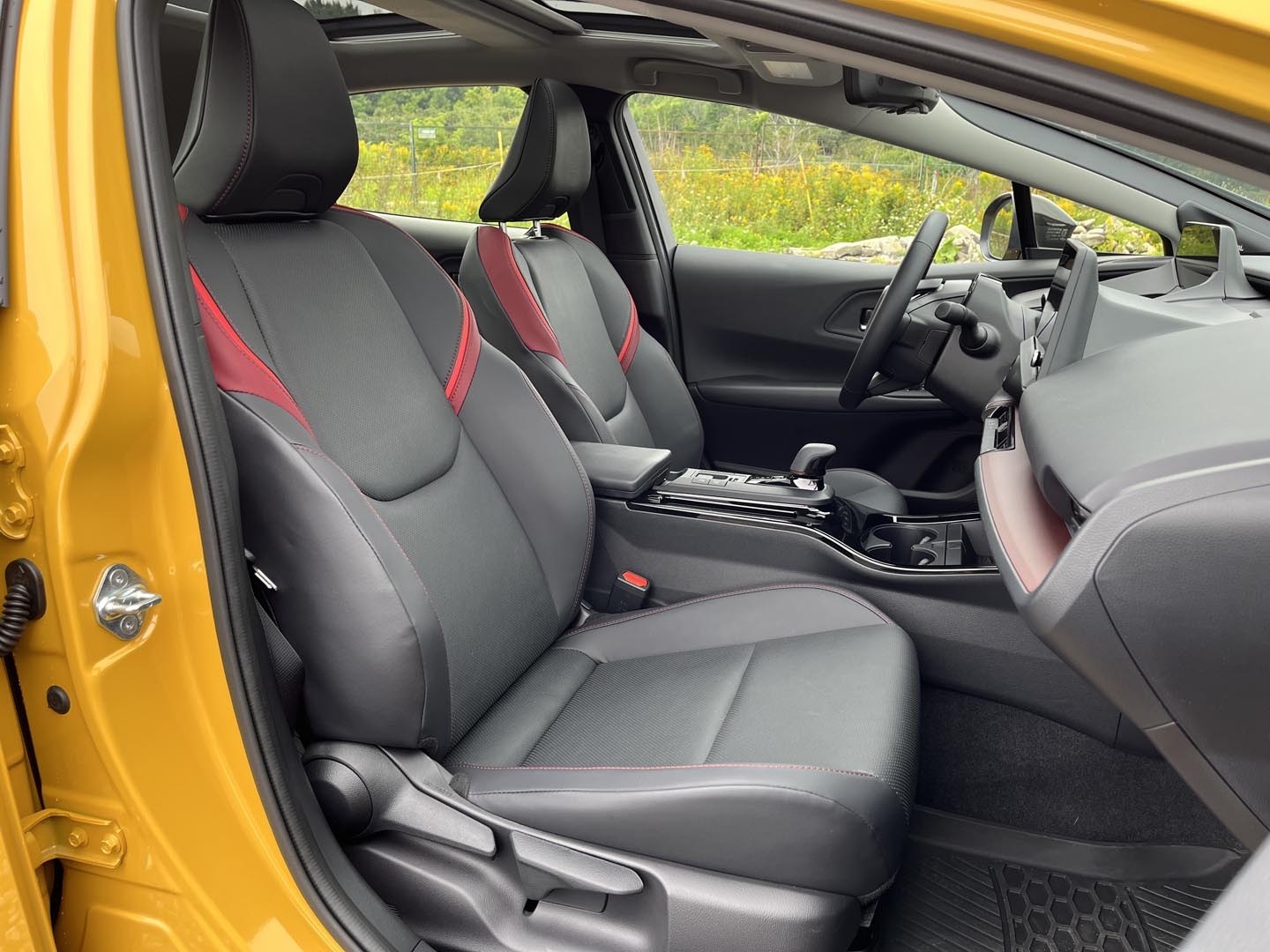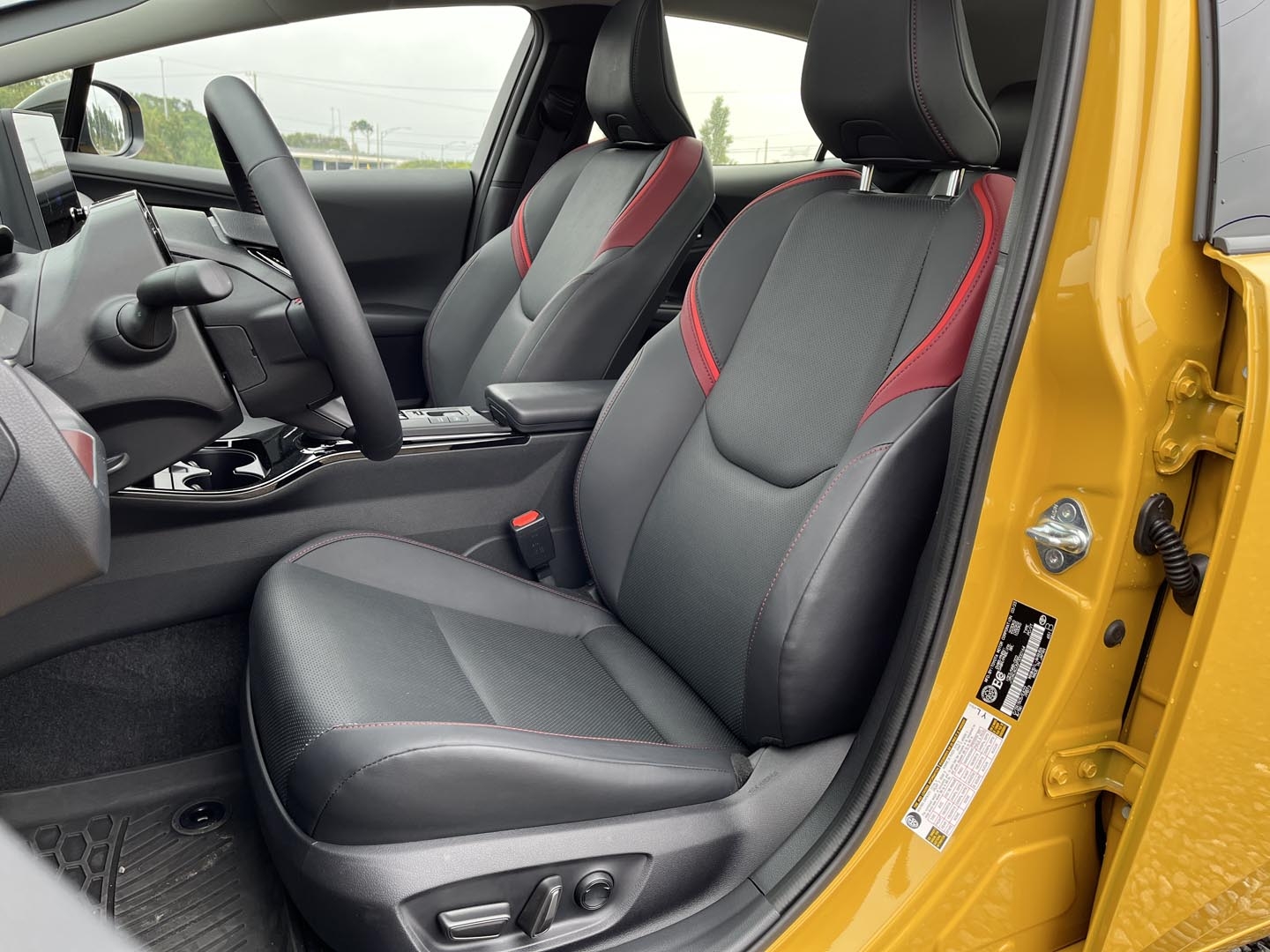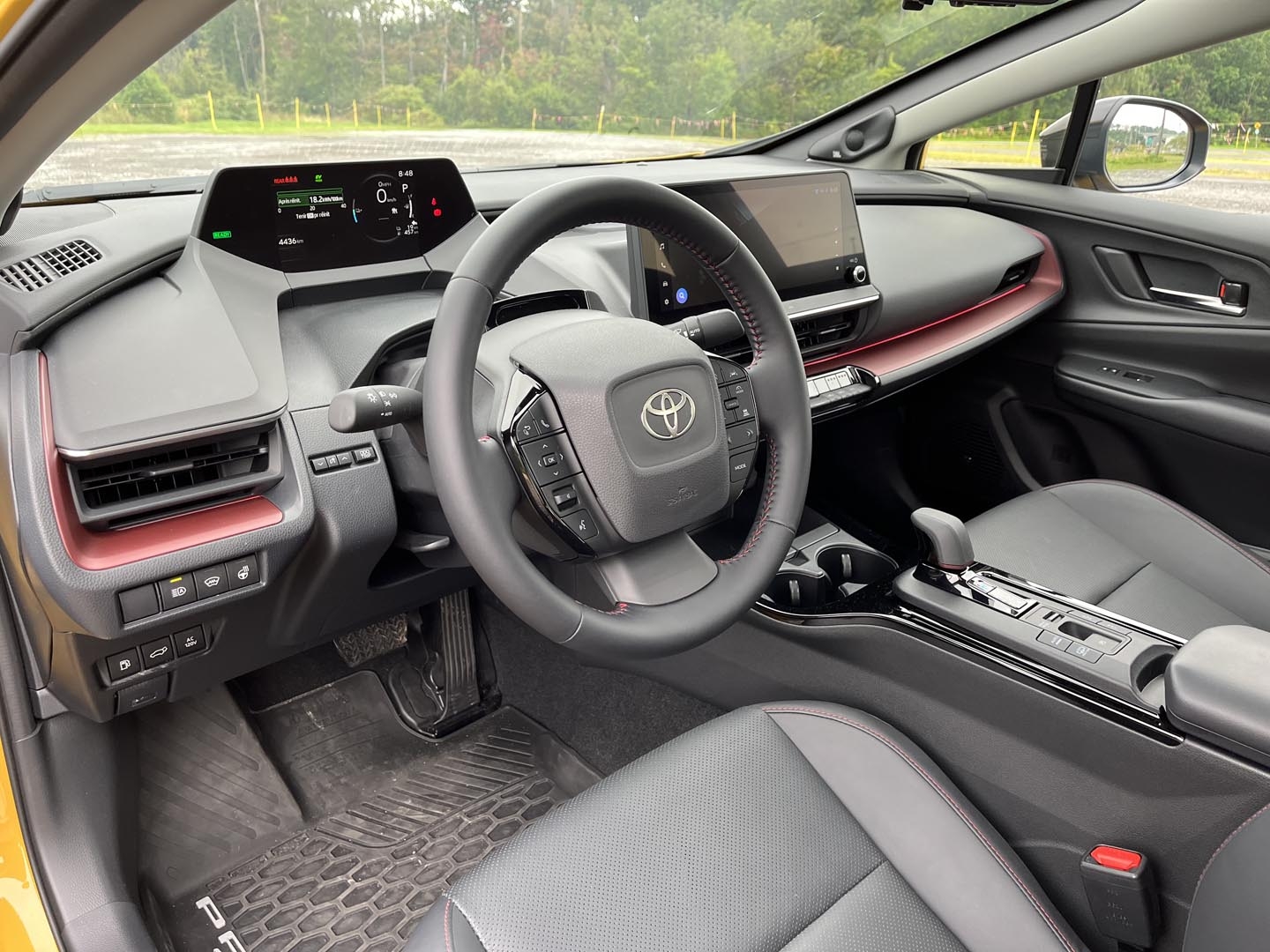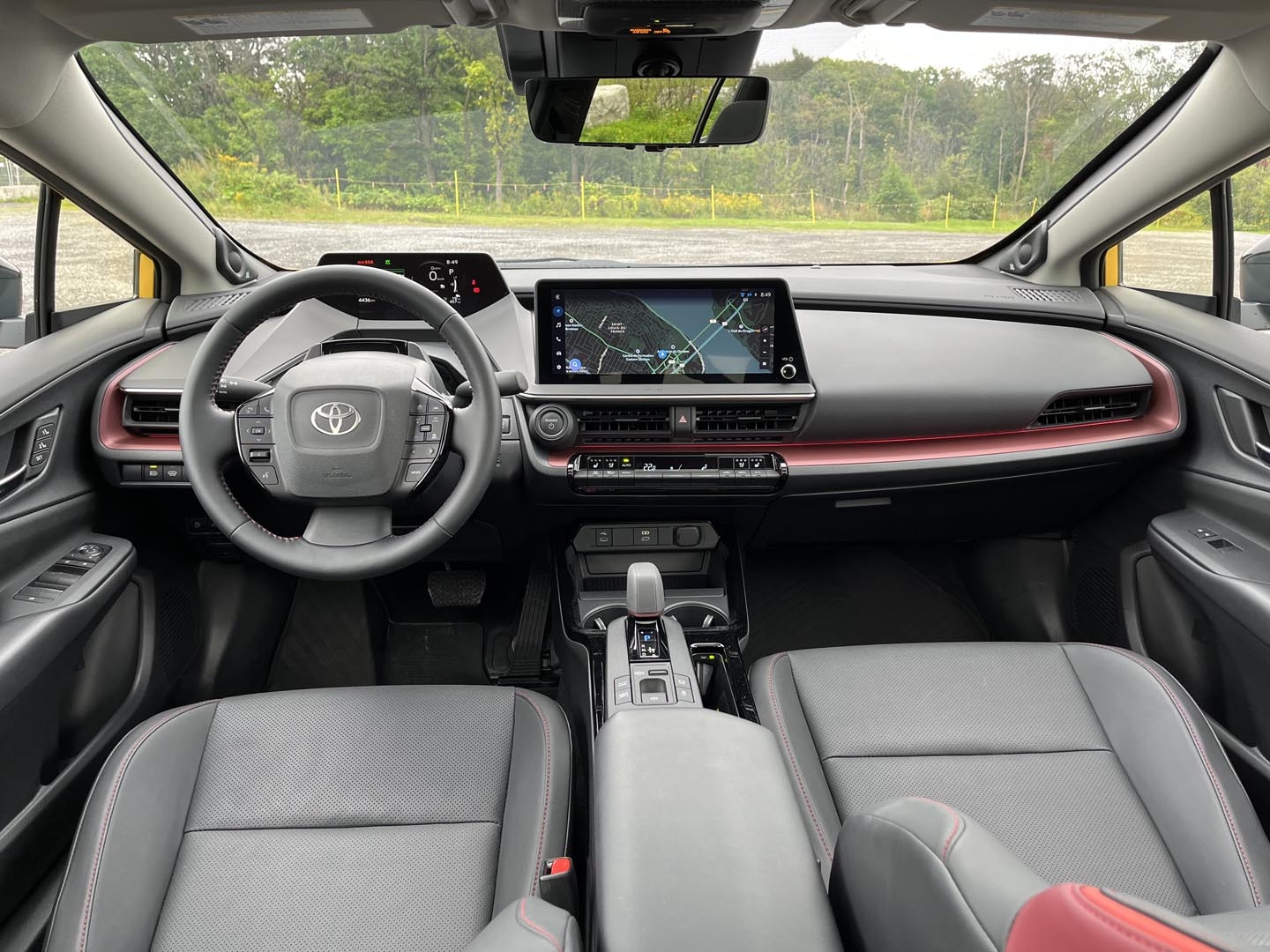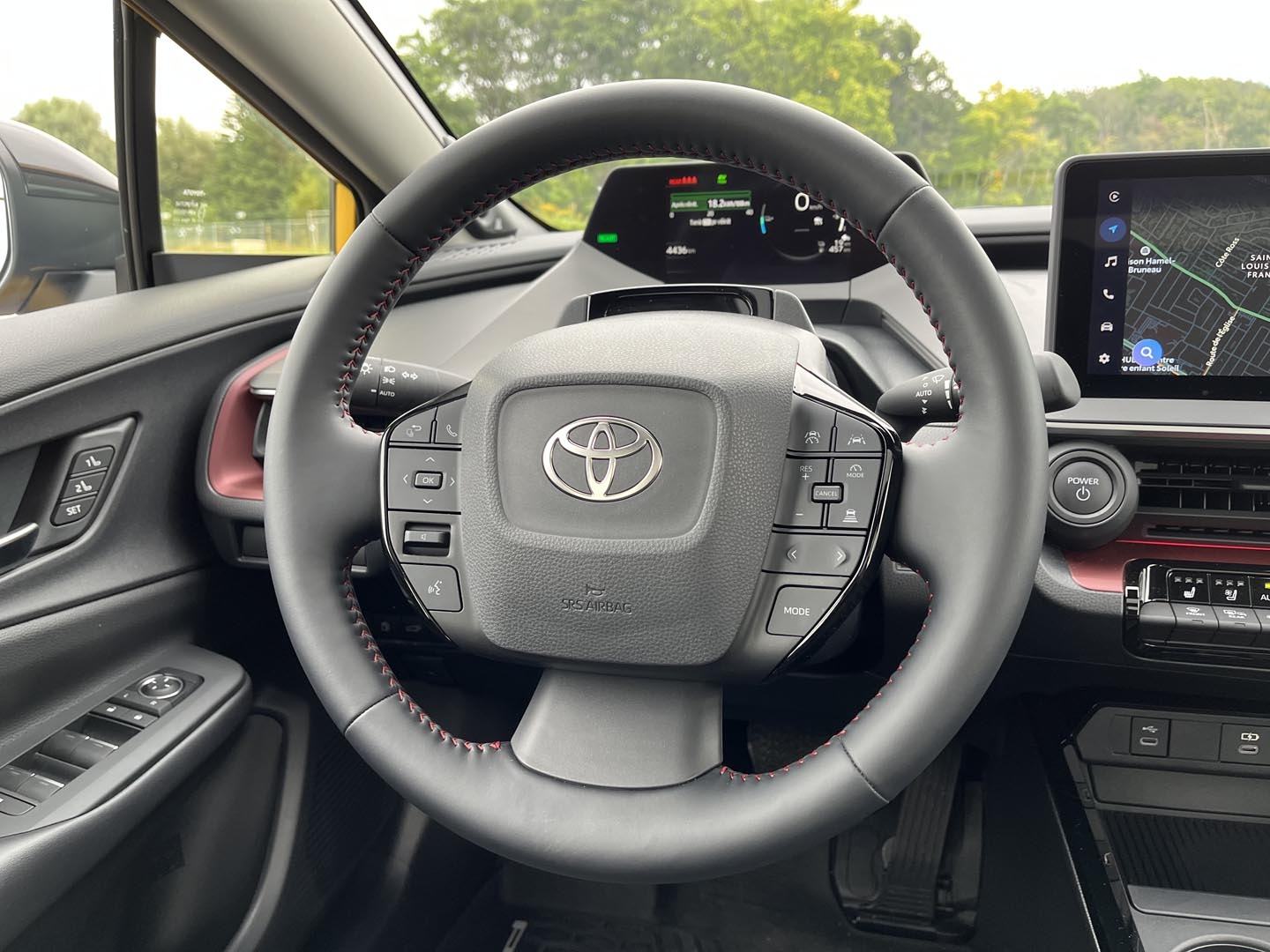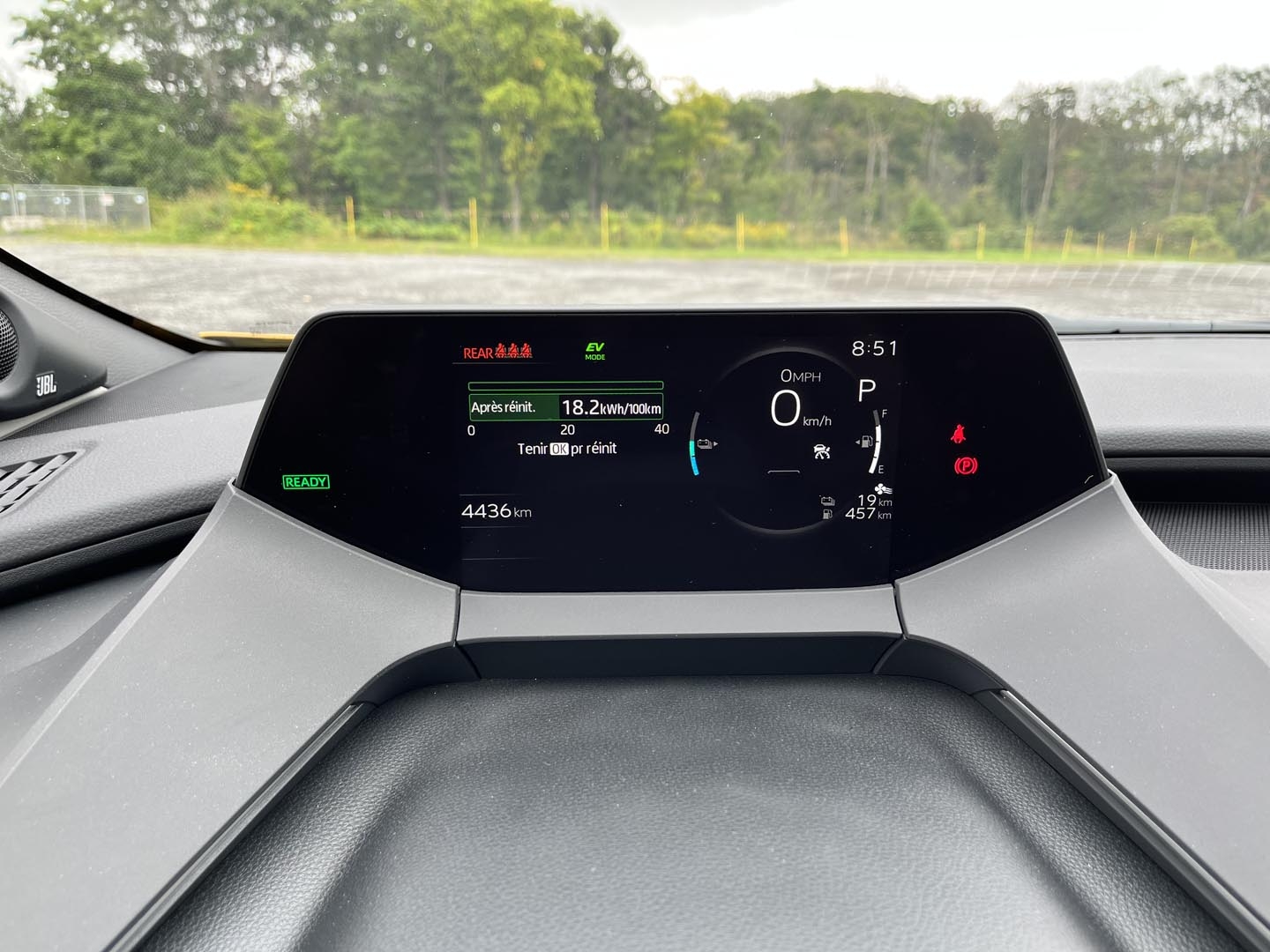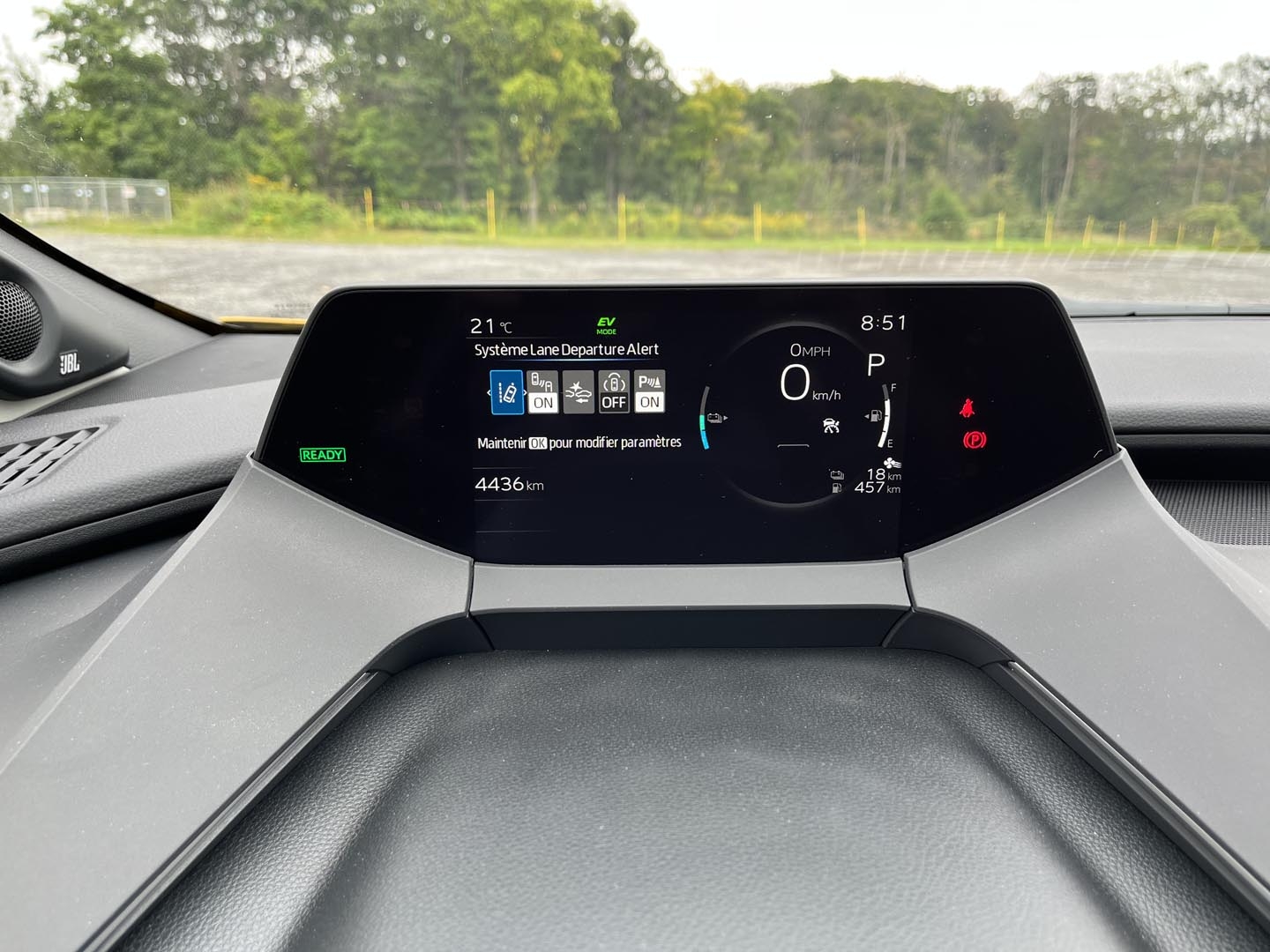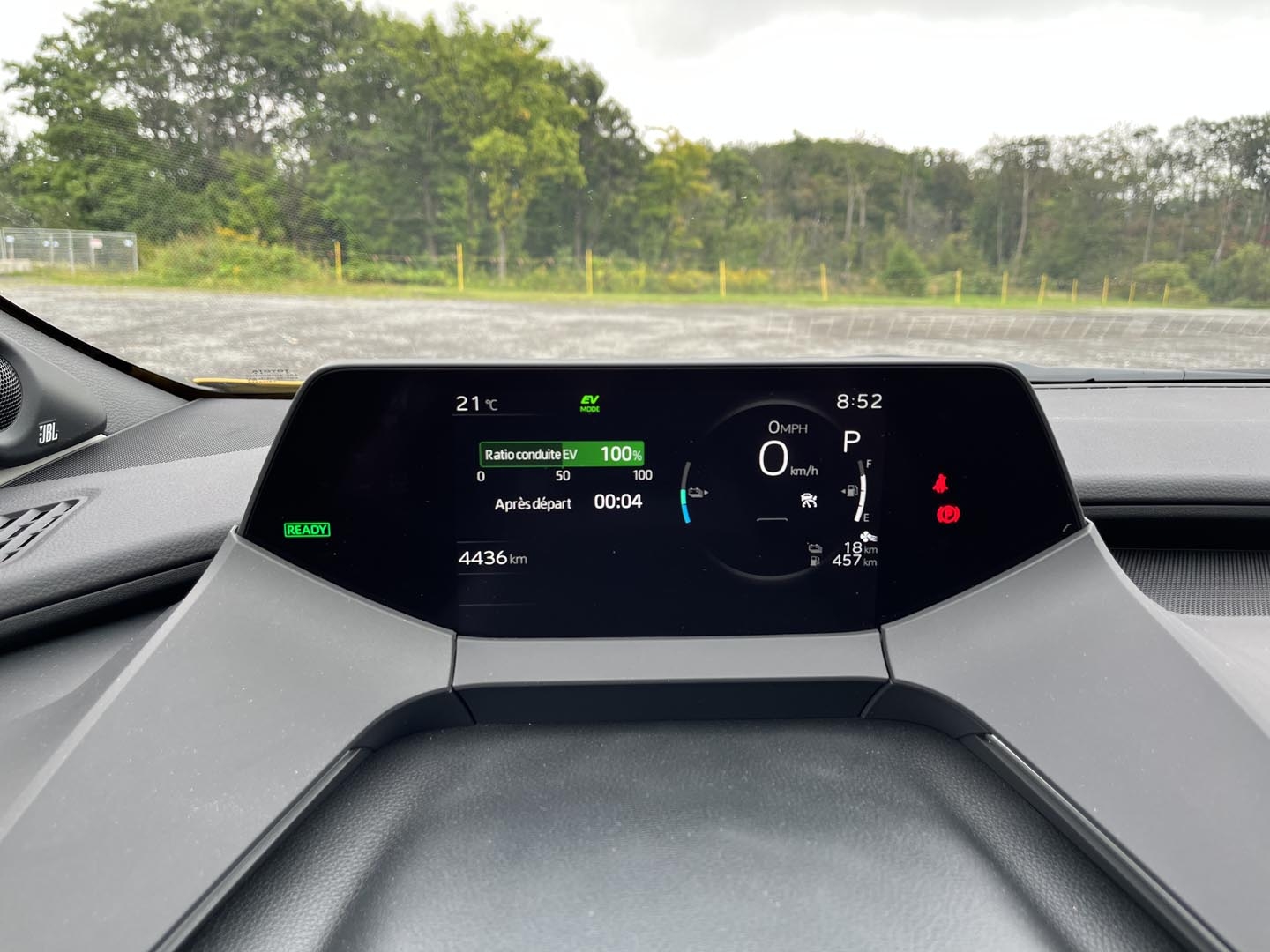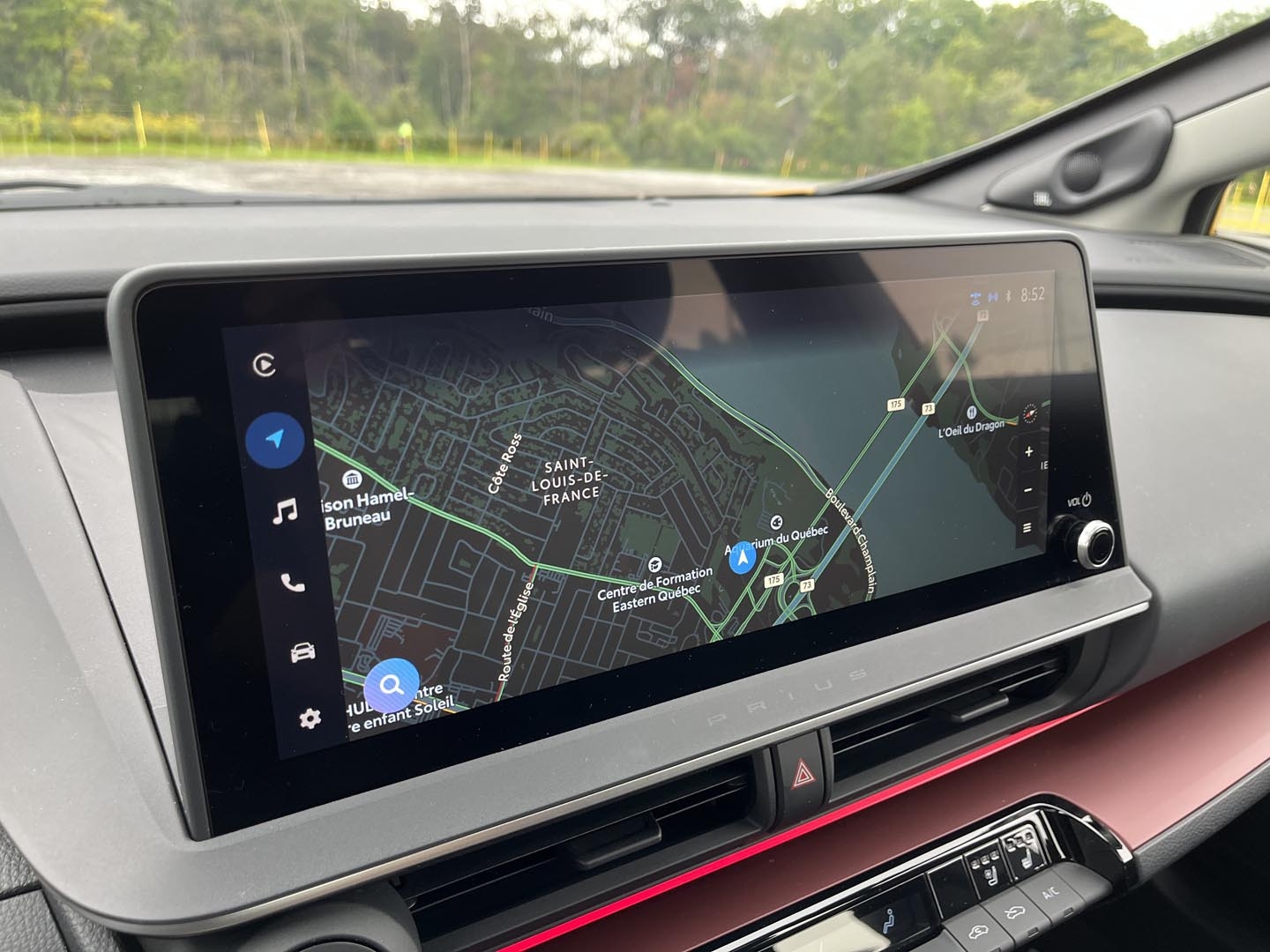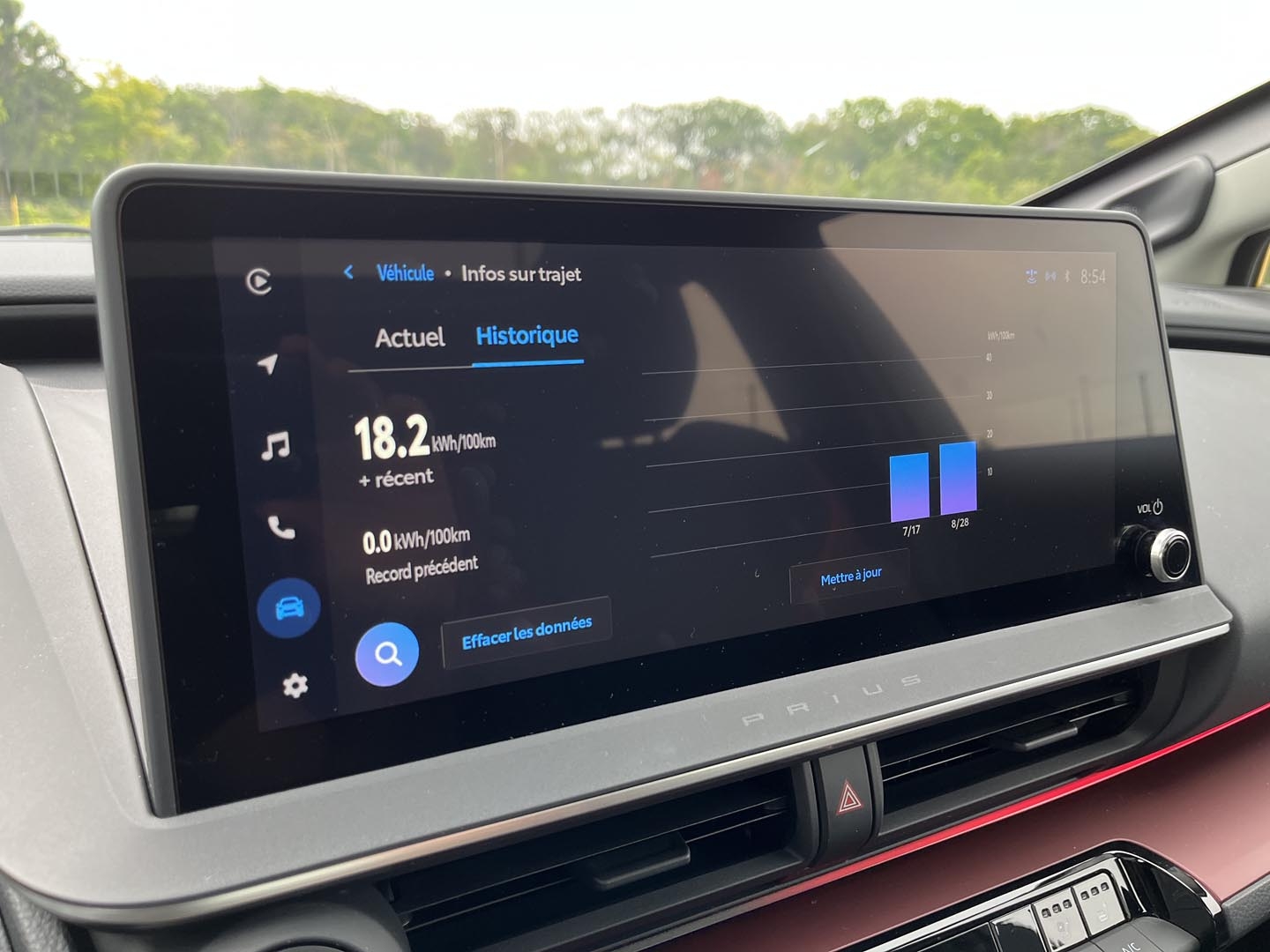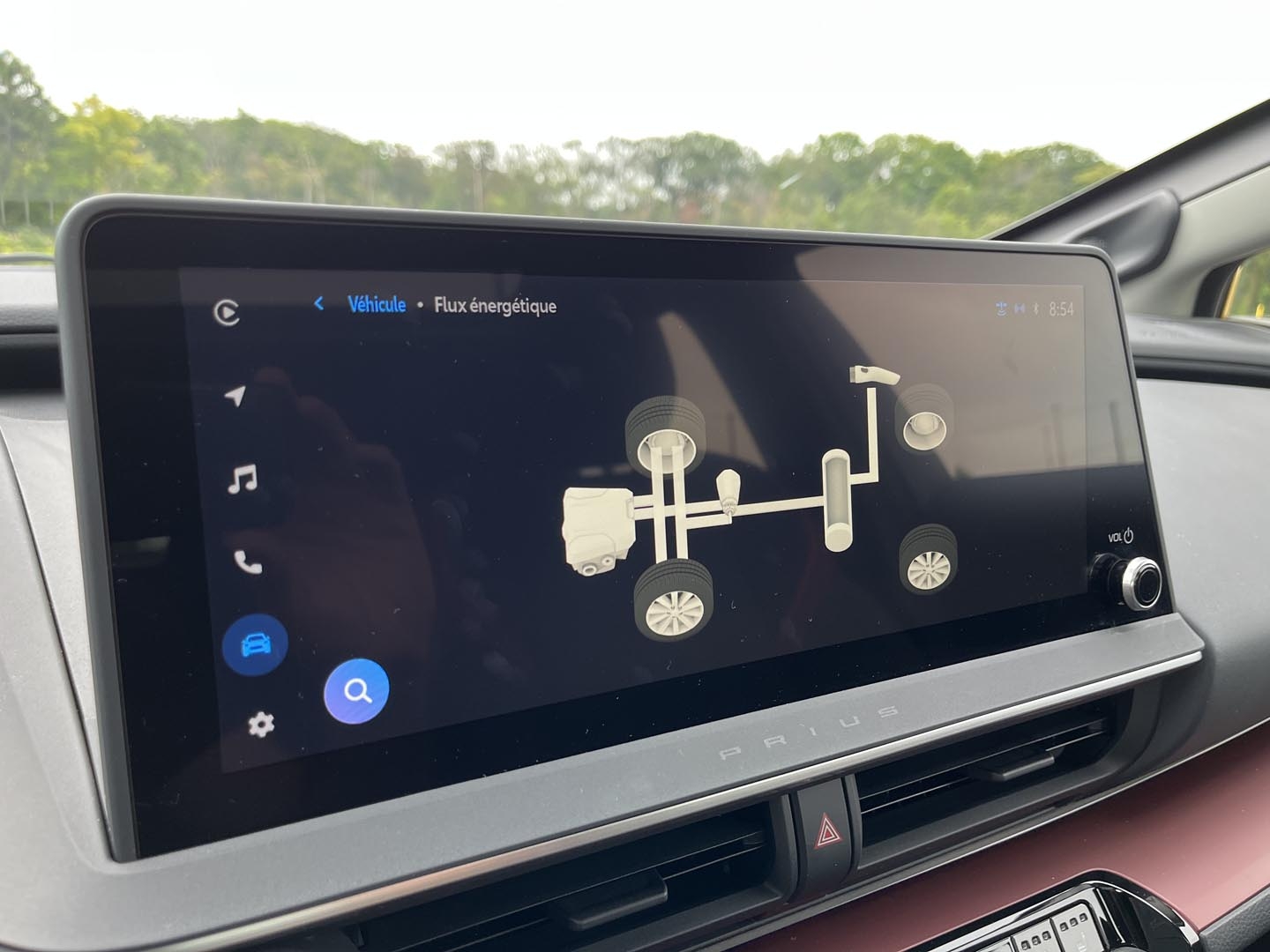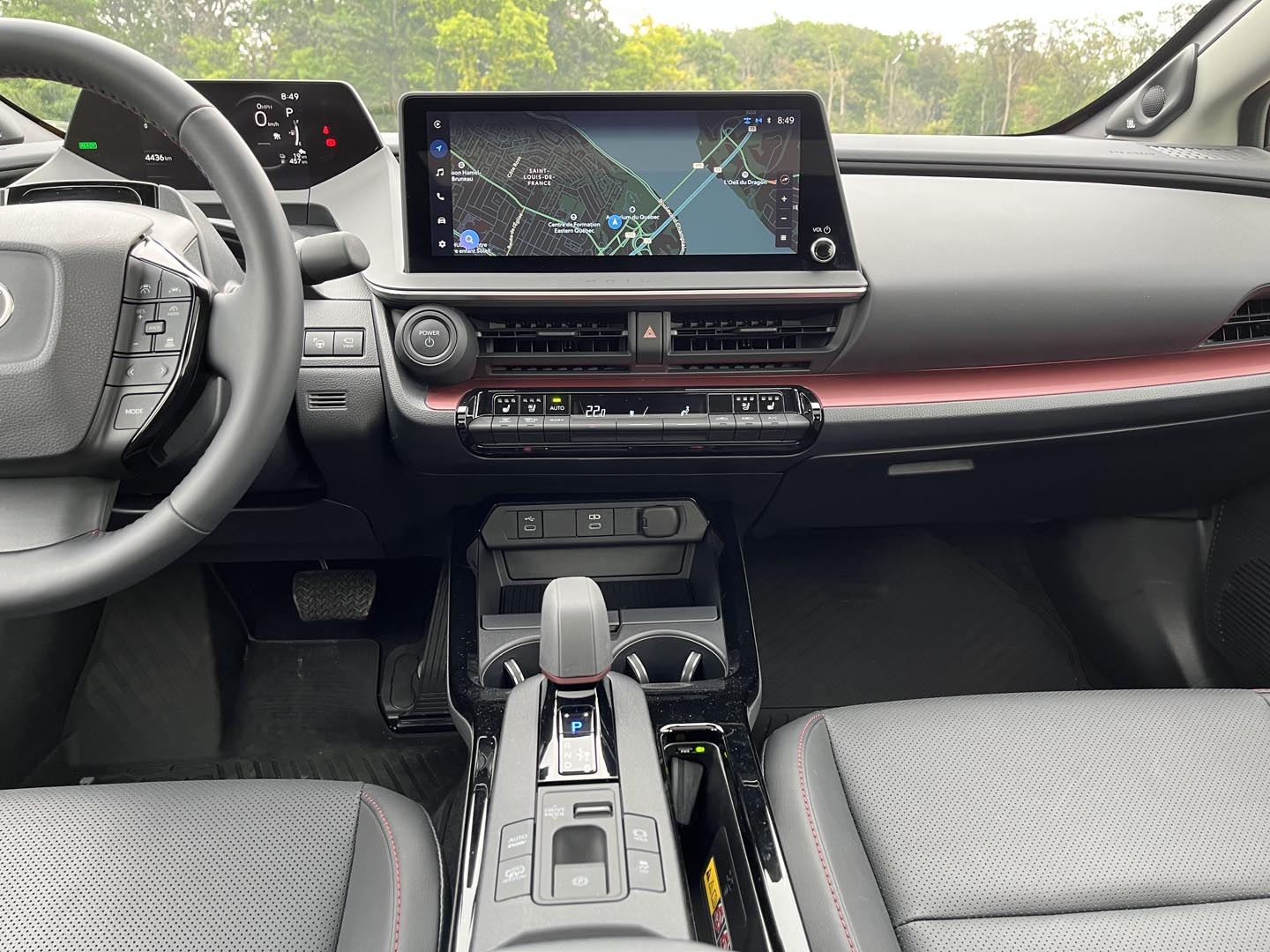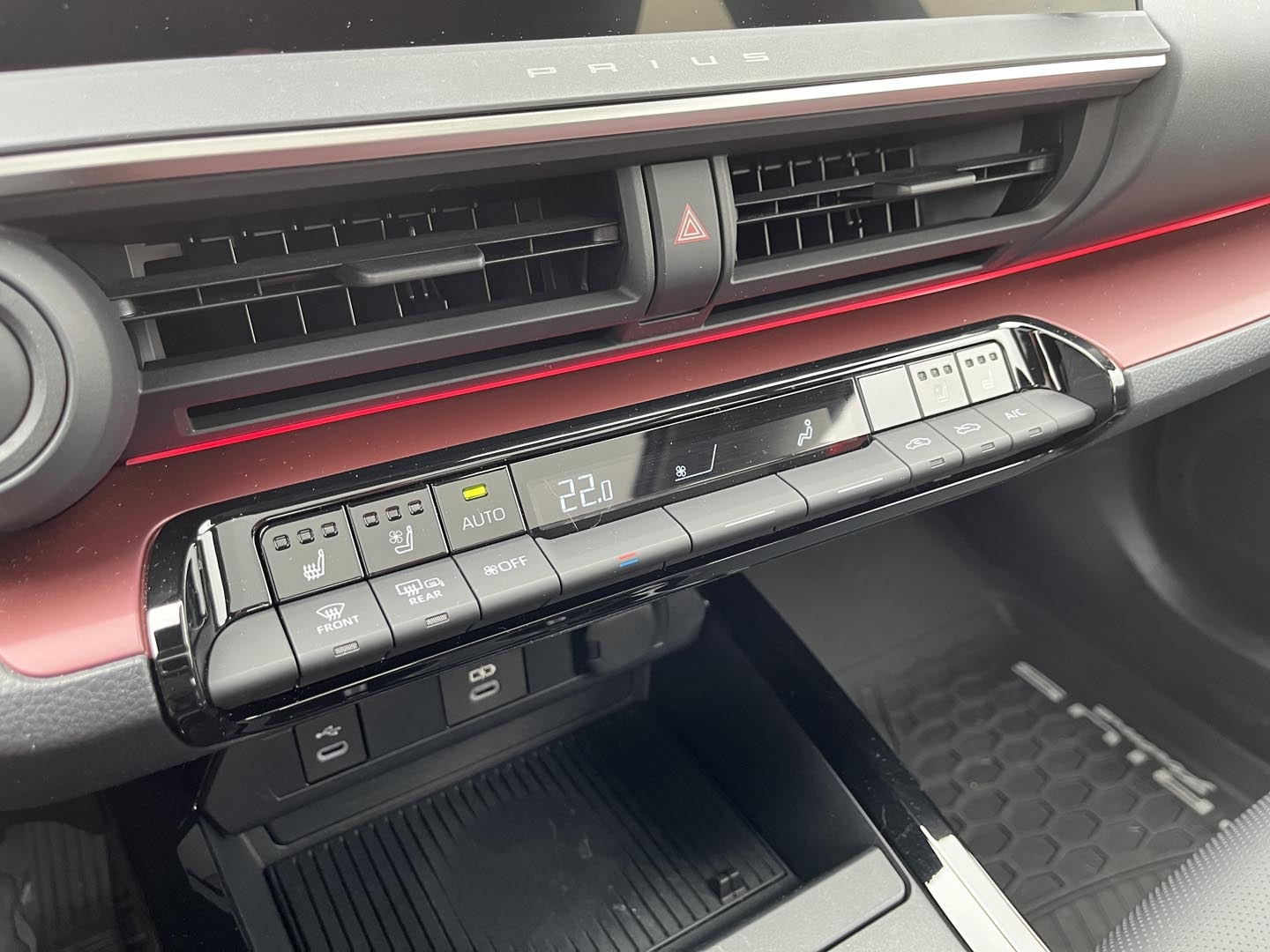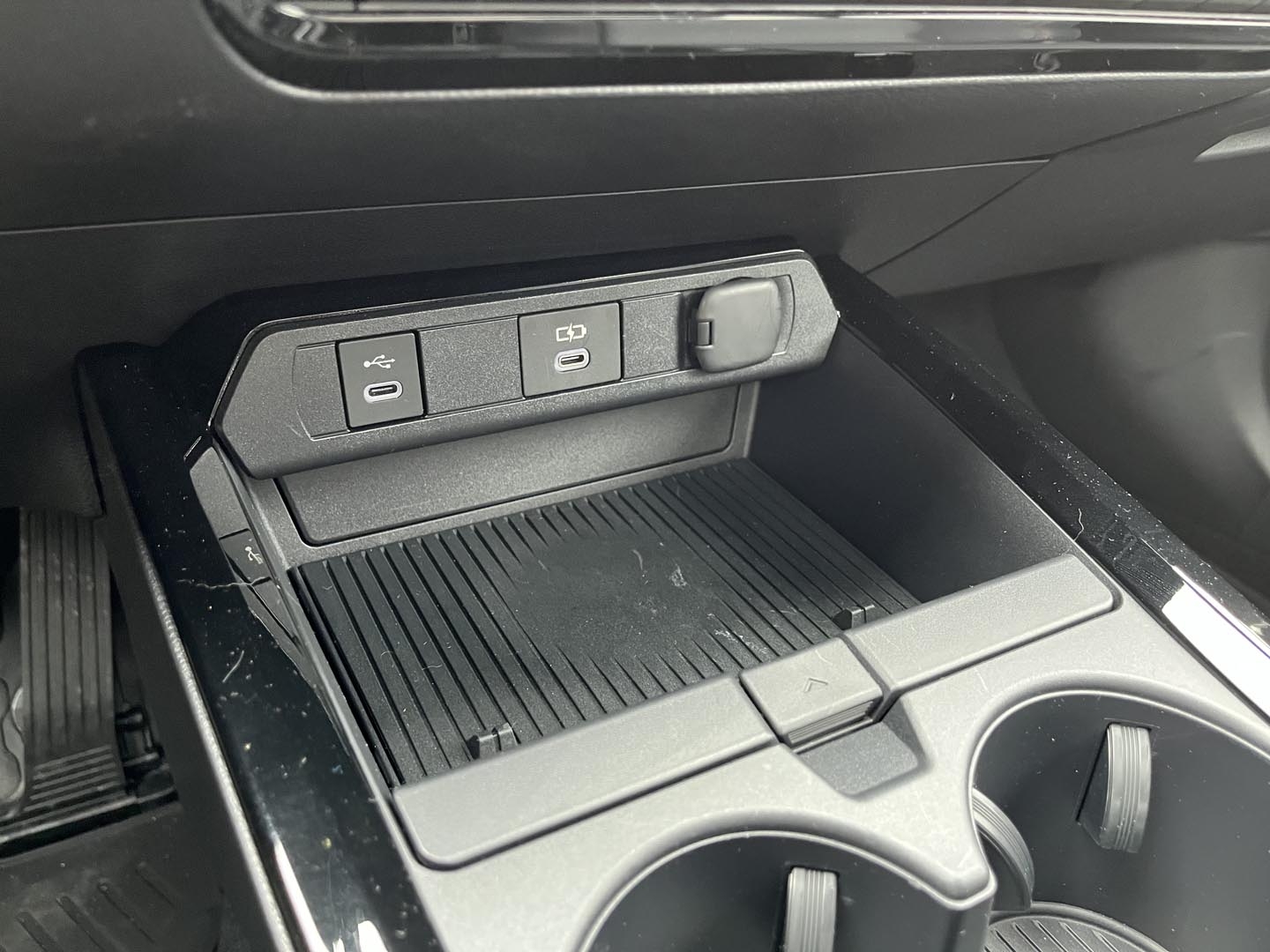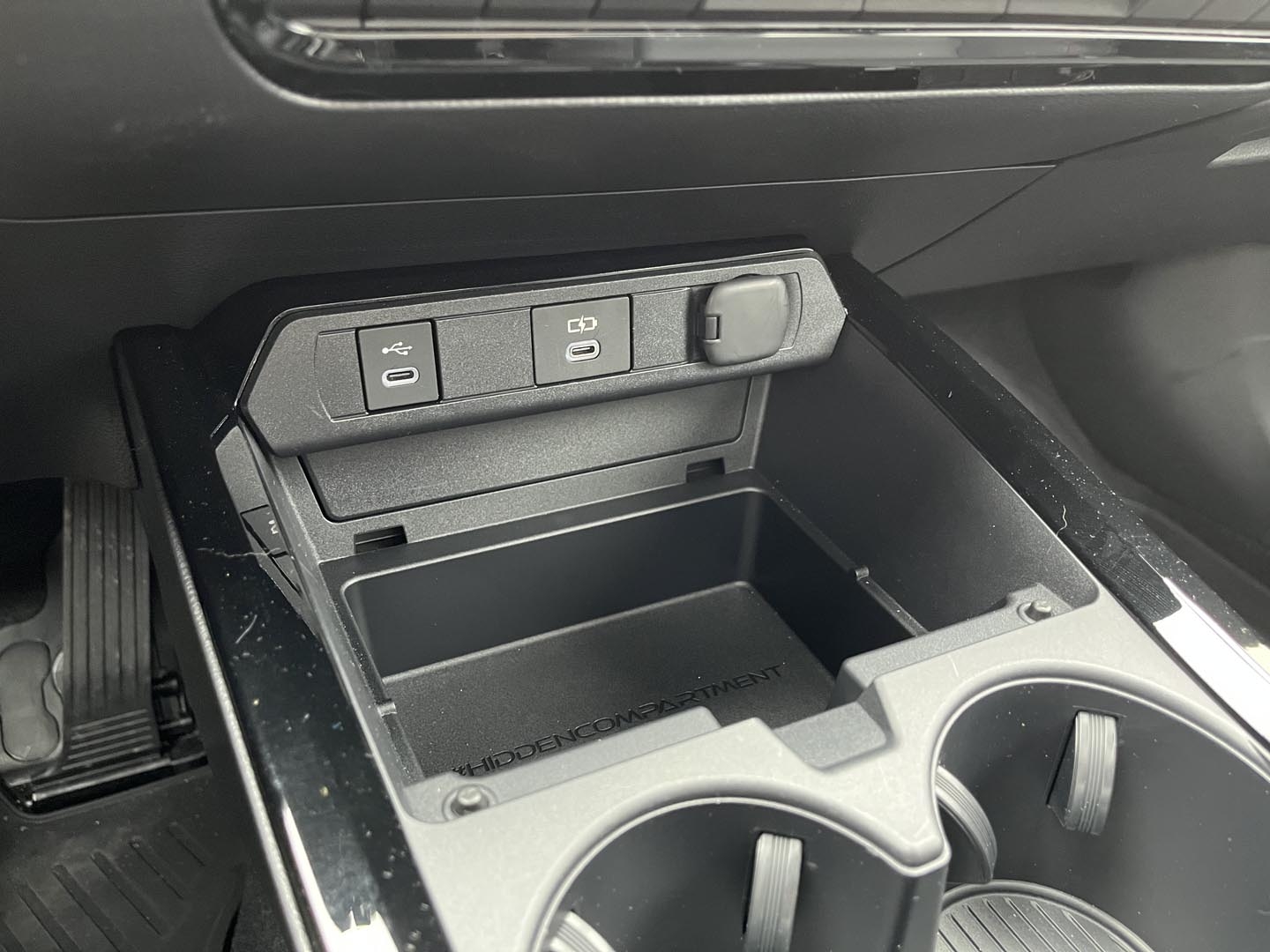
TOYOTA Prius Prime 2024
More stylish and dynamic than ever... at the expense of practicality
Pros and cons
Pros
- Realistic electric range
- Abundant power, in both electric and hybrid mode
- Agile and composed road comportment
- Comfortable front seats
- Improved sound insulation
- Attentive finish
Cons
- Compromised visibility
- Tight rear seating
- Higher consumption
- Lower trunk capacity
- Complex touchscreen
- Sharp price increase
Overview
While Toyota began selling the Prius plug-in hybrid a decade or so ago, the Prius Prime name first appeared in 2017. The model renewed for 2023 is officially the second generation of the car and an exterior clone of the non-plug-in Prius. The quasi-exotic styling accompanies a reworked cabin and a 50 to 80 percent increase in all-electric range, depending on the version. Power also gets a boost, but at the expense of fuel economy in hybrid mode.
All models of the lineup now qualify for the combined government rebates of $7,500—rather than $5,000 as before—thanks to the increase in all-electric range. Which is well and good but offsets only a small portion of the retail price increase. And not forgetting that the rebates apply after taxes, and that the manufacturer finance rates are close to 10 percent.
In this context, is it still worth your while to purchase the icon of the hybrid car in its plug-in variant, still manufactured in Japan? Here’s what our experts have to say.
(Video in French only)
Verdict
Toyota has taken a strange turn with this renewed Prius, be it plug-in or not. The automaker has placed a lot of emphasis on styling, power and dynamics; in terms of visual and driving enjoyment, it has hit the mark. Unfortunately, it is to the detriment of two of the pioneering hybrid’s key virtues: versatility and fuel economy. Considering the sharp increase in price, determine your needs and do the math before signing on the dotted line.
Evaluation
Watch our complete video review (in French with English subtitles)
Safety
Safety features
- Antilock brakes with electronic brake force distribution and emergency brake assist
- Brake override
- Stability and traction control
- Hill-start assist
- Front airbags
- Driver knee airbag
- Front and rear side airbags
- Side curtain airbags
- Seatbelts with pre-tensioners in front
- Five head restraints (adjustable, outboard seats; retracting, rear middle)
- Rear seat reminder
- Backup camera
- Tire pressure monitor
- Forward collision alert
- Automatic forward emergency braking
- Lane departure alert with steering assist
- Lane keeping assist
- Automatic high beams
- Adaptive cruise control
- Blind spot monitoring
- Rear cross traffic alert
- Reverse automatic emergency braking, forward cross traffic alert and driver awareness monitor (standard, XSE and XSE Premium; unavailable, SE)
- Surround view camera (standard, XSE Premium; unavailable, other versions)
Crash test results
National Highway Traffic Safety Administration
Overall score: Not tested
Frontal impact: Not tested
Side impact: Not tested
Rollover resistance: Not tested
Insurance Institute For Highway Safety
Moderate overlap frontal impact: 4 / 4
Small overlap frontal impact: 4 / 4
Side impact: 4 / 4
Rear impact: Not tested
Roof strength: Not tested
IIHS Top Safety Pick
